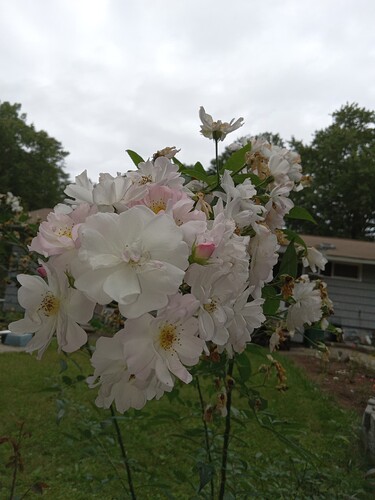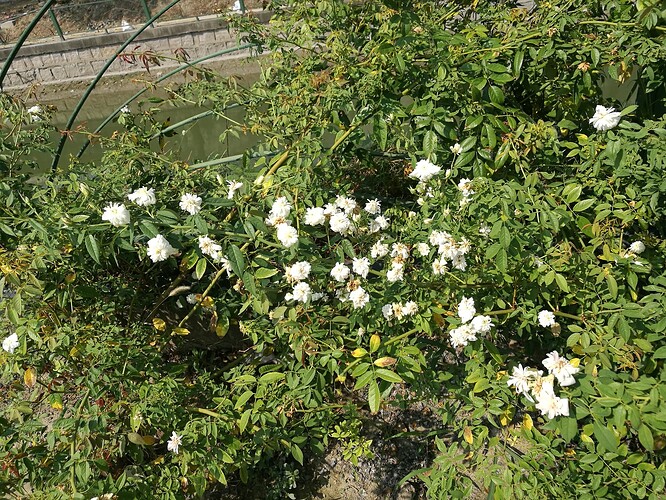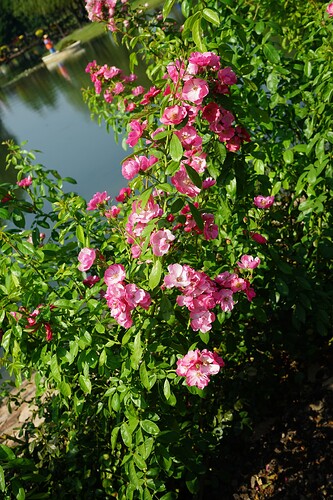[Uploading: 20240824_170927.jpg…
Came up with a couple of decent ones nd am going to do cuttings of this one
David
That “wand of blooms” effect from the simultaneous flowering of primary and secondary clusters along the cane is really nice–it’s uncommon, although I have seen it in some hybrids like Brise Parfum (or in the U.S., “Perfume Breeze”). I suspect that some combination of Rosa multiflora and R. moschata background might be involved. I don’t know what sort of climate you’re in, but the seedling looks extremely healthy, too. Congratulations!
Stefan
The rose with “typical” bloom pattern I saw might be ’ Malvern Hills’ (AUScanary). This picture shows a basal shoot covered with axillary cymes from about 0.5m height to the top, more than 1m.
I also find similar flowering pattern more or less on other repeat blooming, cluster-flowed climbers, such as Phyllis Bide and Angela (KORday).
For the first flush they bloom in clusters on side shoots like R. multiflora, after that when they send basal shoots, they may grow ones covered with flowers instead of long vegetative shoots in R. multiflora.
I agree with that since both PB (Polyantha × Noisette) and Angela has evident multiflora and moschata ancestry. For MH, its parentage is unknown but since it is a diploid with clusters of small, ruffled, cream flowers, I suspect that might be something like noisette × hybrid multiflora.(Someone in HMF said it is out of the noisette Claire Jacquire)
About how to breed roses with this flowering pattern, I don’t know climbing habit is necessary because something like dwarf polyanthas only possess terminal, leafless inflorescences. MH, PB and Angela are not free flowering, they tend to send long shoots with flowers only on the top part. I think it is interesting to breed a small climber with slender, soft, nearly thornless stems, always covered with numerous flowers almost from bottom to top, like a viticella type clematis.
Mingwei
My flowers are not so double.



